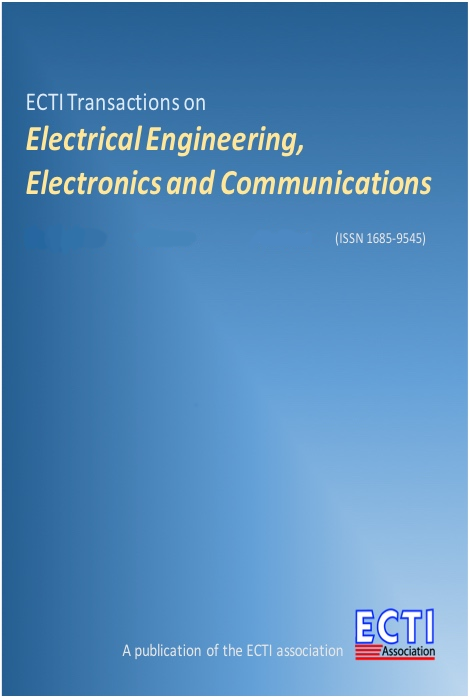Creation of a Rigorous Human Head Model from MRI Images with Reports on SAR Caused by 2.6 GHz 5G Mobile Handset Radiation
Main Article Content
Abstract
This research work proposes a method to rigorously model a 3D human head from the informative data in magnetic resonance imaging (MRI). The approach is based on each slice of 53 MRI resized to a 64 × 64 grayscale image to enable a practical simulation. The optimized unit cell of 5.6 × 5.6 × 5.6 mm3 is identified as a particular type of tissue. It corresponds to the average size of an actual human brain. The material properties are assigned to various tissues of the entire structure of the human head. The computational model of this will then be used as a virtual object to study the specific absorption rate (SAR) with electromagnetic radiation (EMR) at 2.6 GHz as a 5G mid-band frequency. A commonly known finite-different time-domain (FDTD) method is used as a tool in the SAR simulation. The key results show that a handset with a power of less than 0.8 W (Watts), operating at a handset to head separation distance of 1.12 cm, will meet the FCC SAR 1g limit of 1.6 W/kg.
Article Details

This work is licensed under a Creative Commons Attribution-NonCommercial-NoDerivatives 4.0 International License.
This journal provides immediate open access to its content on the principle that making research freely available to the public supports a greater global exchange of knowledge.
- Creative Commons Copyright License
The journal allows readers to download and share all published articles as long as they properly cite such articles; however, they cannot change them or use them commercially. This is classified as CC BY-NC-ND for the creative commons license.
- Retention of Copyright and Publishing Rights
The journal allows the authors of the published articles to hold copyrights and publishing rights without restrictions.
References
B. B. Beard and W. Kainz, “Review and standardization of cell phone exposure calculations using the SAM phantom and anatomically correct head models,” BioMedical Engineering OnLine, vol. 3, 2004, Art. no. 34.
A.-K. Lee, S.-E. Hong, J.-H. Kwon, and H.-D. Choi, “SAR comparison of SAM phantom and anatomical head models for a typical bar-type phone model,” IEEE Transactions on Electromagnetic Compatibility, vol. 57, no. 5, pp. 1281–1284, Oct. 2015.
K. A. Johnson and J. A. Becker. The whole brain atlas. https://www.med.harvard.edu/aanlib/ (accessed Oct. 10, 2021).
A. Z. Elsherbeni, C. D. Taylor, and Y. R. Samii. Real time simulation of the interaction of electromagnetic waves with a human head. http://home.olemiss.edu/~atef/head/headpresentation/index.html (accessed Oct. 13, 2021).
IT’IS Foundation. Dielectric properties. https://itis.swiss/virtual-population/tissueproperties/database/dielectric-properties/ (accessed Oct. 10, 2021).
L. Ling, L. Ronglin, X. Suming, and N. Guangzheng, “A new generalized perfectly matched layer for terminating 3d lossy media,” IEEE Transactions on Magnetics, vol. 38, no. 2, pp. 713–716, Mar. 2002.
C. Gabriel, “Compilation of the dielectric properties of body tissues at RF and microwave frequencies,” Armstrong Laboratory (AFMC), Occupational and Environmental Health Directorate, Radiofrequency Radiation Division, Brooks Air Force Base, Texas, USA, Tech. Rep. AL/OE-TR-1996-0004, Jan. 1996.
T. Jariyanorawiss and W. Chongburee, “A report on human head exposure to a 2.6 GHz midband of 5G by using FDTD method,” in 2020 17th International Conference on Electrical Engineering/Electronics, Computer, Telecommunications and Information Technology (ECTI-CON), 2020, pp. 808–811.
Specific absorption rate (SAR) for cellular telephones. https://www.fcc.gov/general/specificabsorption-rate-sar-cellular-telephones (accessed Jan. 30, 2022).
P. Hartmann, A. Ramseier, F. Gudat, M. J. Mihatsch, W. Polasek, and C. Geisenhoff, “Normal weight of the brain in adults in relation to age, sex, body height and weight,” (in German), Der Pathologe, vol. 15, no. 3, pp. 165–170, Jun. 1994.


